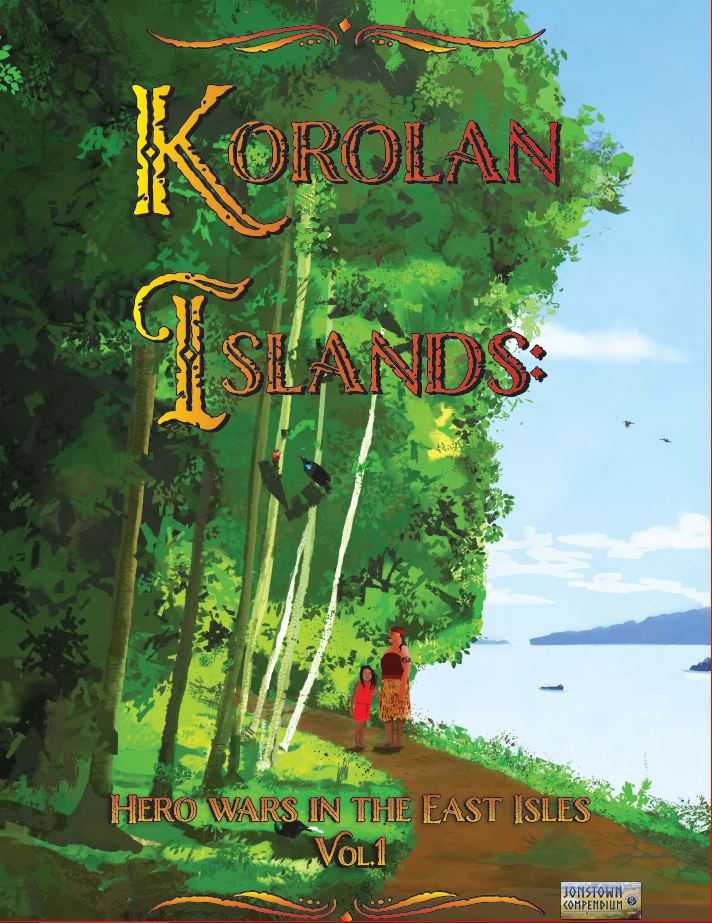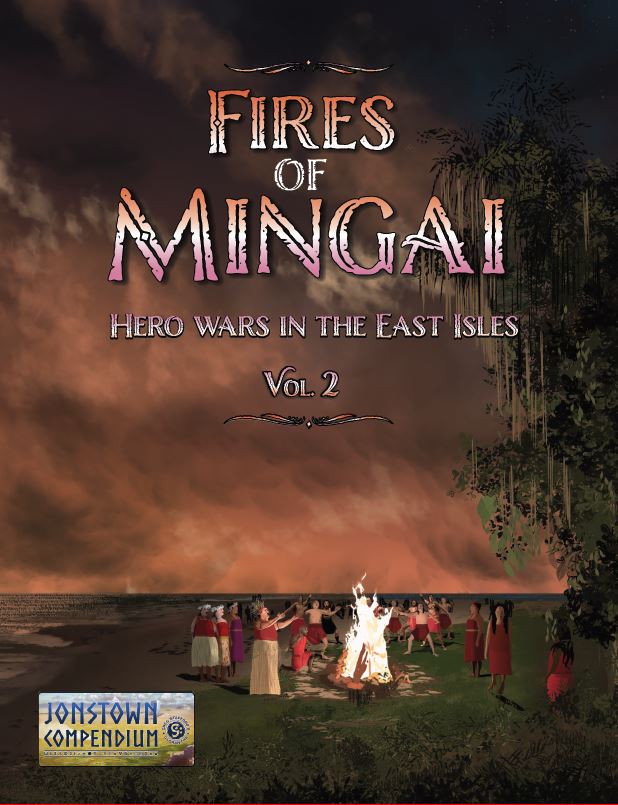Welcome to a new issue of the Journal of Runic Studies, the premier Malkioni publication for studies into the nature of Glorantha. If you haven’t subscribed yet, please consult with the spirit bound to the appropriate electronic page.
God Learner Sorcery
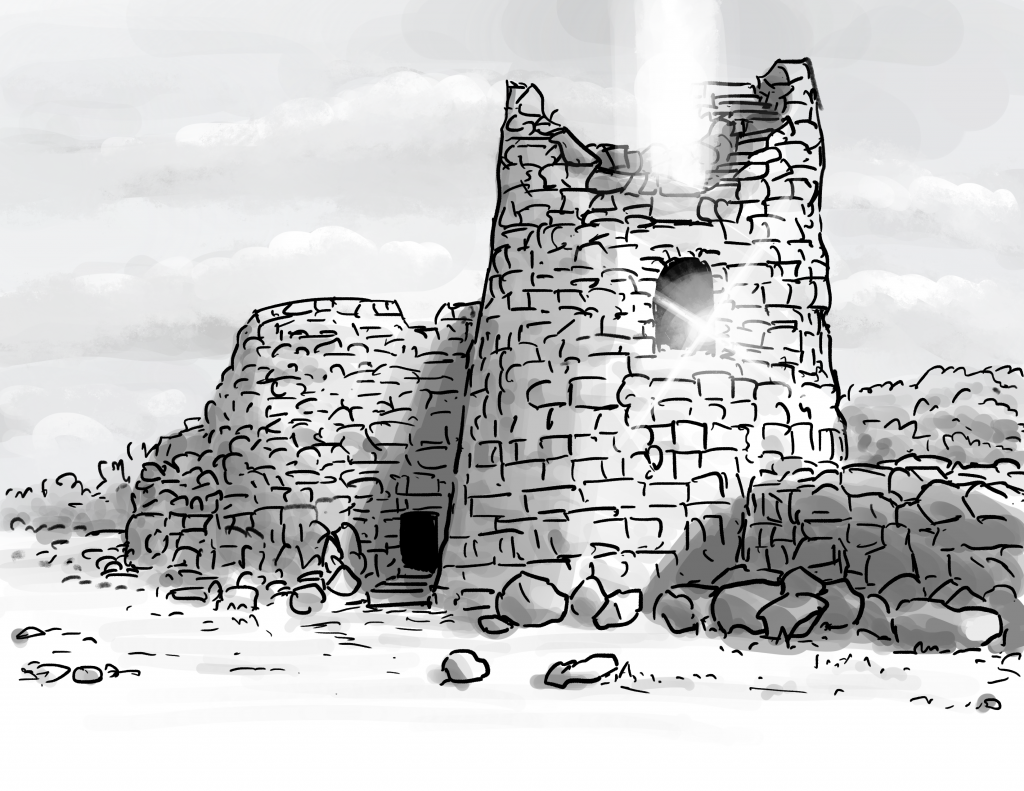
Here is what us God Learners were up to this week.
Episode 16: Ernaldan Adventuresses: Blood, Sex, and Rock’n’Roll
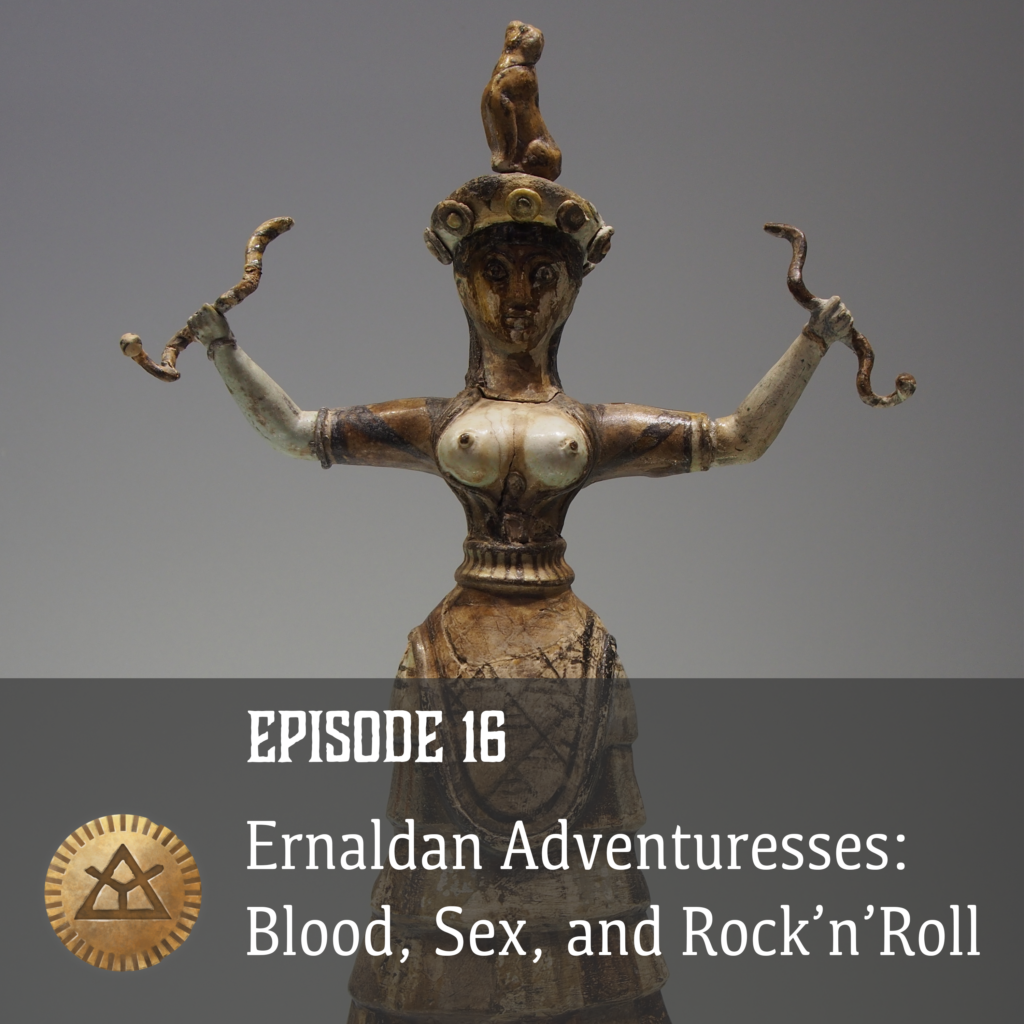
Episode 16 is about playing Ernaldan cultists and other Earth pantheon initiates! We have Katrin Dirim and Claudia Loroff with us, who summarizes Ernaldan priestesses as “blood, sex, and rock’n’roll”. We discuss Ernalda’s role in Glorantha and in our games, how to play non-combative characters, what the best Earth magic is, orgies and pregnancies, and more! Plus: Gloranthan cooking!
Chaosium News

Here are this week’s Chaosium news!
Anniversary of Gene Day’s Passing
Chaosium shared a few words on their social media accounts for the 40th anniversary of Gene Day’s passing:
Vale Gene Day, whose untimely passing was 40 years ago last week—in addition to being a rising star in comics, his art also left an indelible legacy upon many of Chaosium’s earliest board game and TTRPG releases (Nomad Gods, Call of Cthulhu, RuneQuest, Stormbringer and more).
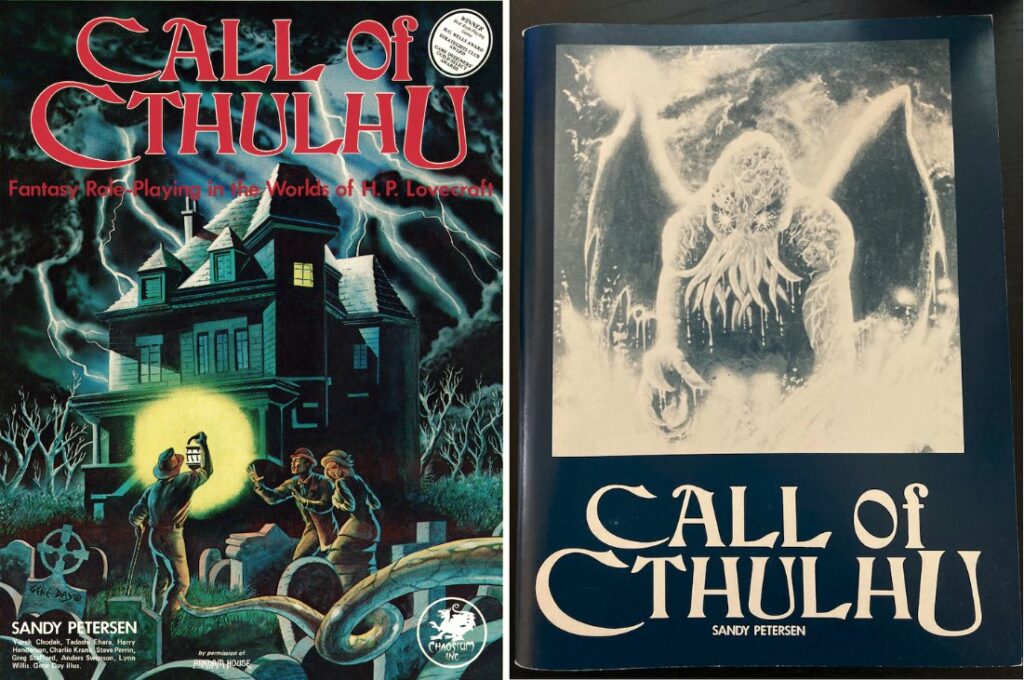
Gene’s most iconic art pieces for Chaosium are probably for Call of Cthulhu:
The cover painting was commissioned for Call of Cthulhu in 1981, but the Cthulhu image on the right originally comes from Gene’s 1979 limited ed art book ‘All Things Dark and Dangerous’ (Shadow Press, Canada).
But for Gloranthaphiles, he also did a few timeless depictions of Prax, in Nomad Gods for instance. We talk a bit about Gene’s art, and other Praxian matters, in our two episodes (part 1 and part 2) on this venerable board game.
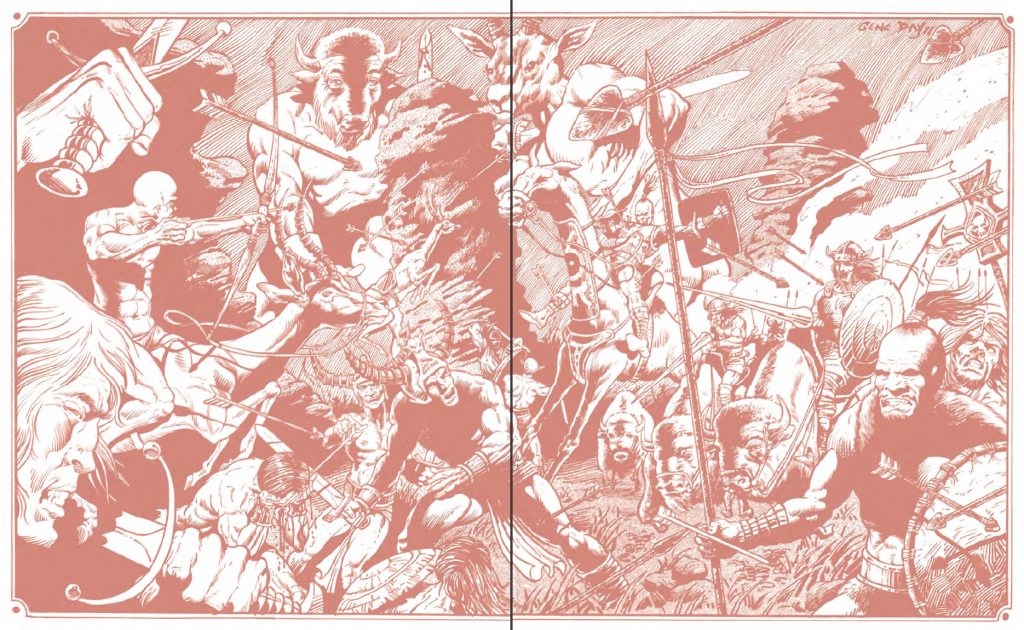
Jonstown Compendium

The Jonstown Compendium is Chaosium’s community content program for all Gloranthan games, hosted on DriveThruRPG. Disclaimer: all the relevant links are affiliate links that hopefully will let us cover some of the hosting and maintenance costs for the website and podcast! Thanks for using them!
Teasing the Hero Wars in the East Isles
Neil Gibson is teasing some East Isles action!
Coming VERY soon, not one but TWO source books for the Hero Wars in the East Isles from Hannu Rytövuori, David Cake and Nils Weinander.
Vol 1. Korolan Islands: History, Geography, Player Background, Occupations, Mysticism, Martial Arts, Islands Details and more! (~87 pages)
Vol 2. Fires of Mingai: A starter campaign set in the East Isles with four, fully detailed scenarios. (~127 pages)
I love those covers!
Previewing the Pavis & Big Rubble Companion Remake

Ian Thomson has a PDF preview for us while he’s doing some finishing touches to his upcoming Jonstown Compendium book. For those who don’t know, this is the relaunch of some of his old Pavis & Big Rubble Companion materials.
Jeff’s Notes

Jeff Richard, the current mastermind on everything Gloranthan at Chaosium, is often posting notes and thoughts on the RuneQuest Facebook group. Here’s our curated list from the past week. A partial archive of these sources is compiled on the Well of Daliath.
The Wetlands of Lowland Peloria
Jeff shares some notes about the wetlands of lowland Peloria, which are located basically between Glamour and Alkoth. You can see the wetlands on this Argan Argar map in brown:
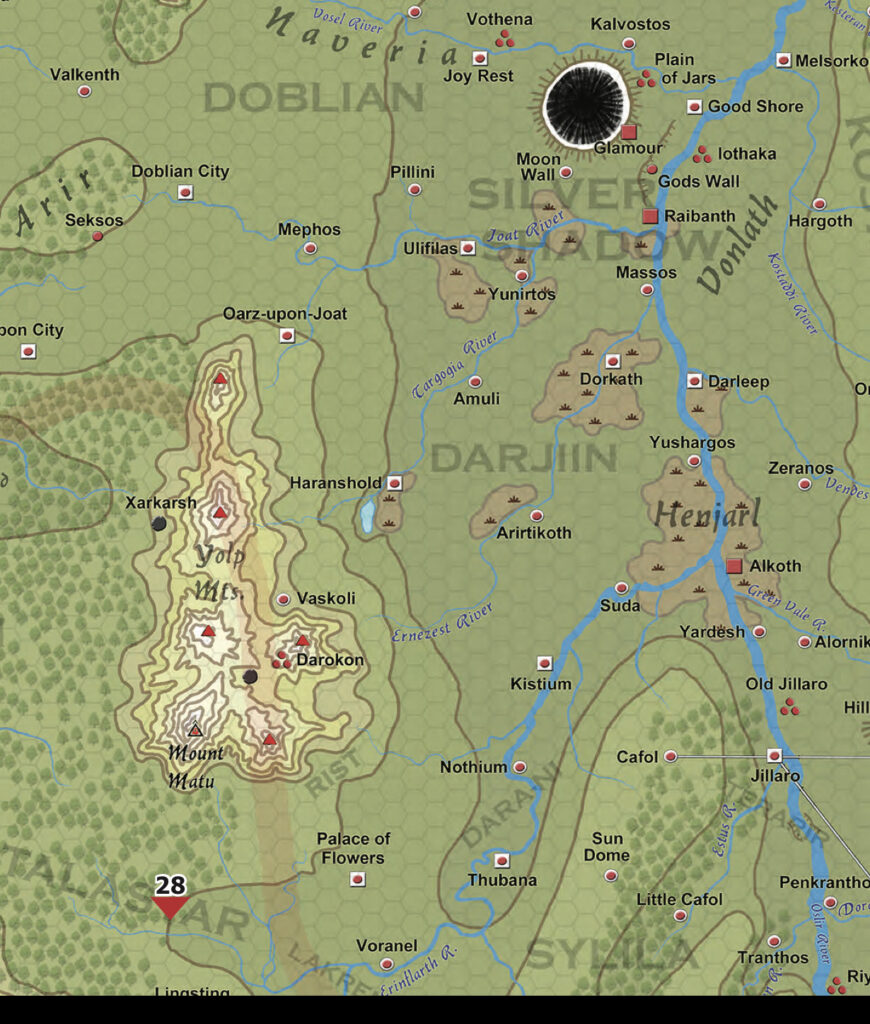
Unlike the Upland Marsh in Dragon Pass, these marshlands are densely populated. Other Pelorians refer to the inhabitants of these marshlands as Weeders. They build boats, huts, lodges, nets, and even clothing out of the reeds and rushes. They live off fishing, growing rice, and raising fowl and some other livestock.
Jeff uses a picture of the Arab marshes of Iraq for this. This is located in the wetlands near where the Tigris and Euphrates rivers meet — what used to be Mesopotamia in the Bronze Age. This is the suburbs of Uruk and other famous ancient cities, although I haven’t checked if there used to be wetlands back then too (climate and shorelines changed a lot in 4000 years!)
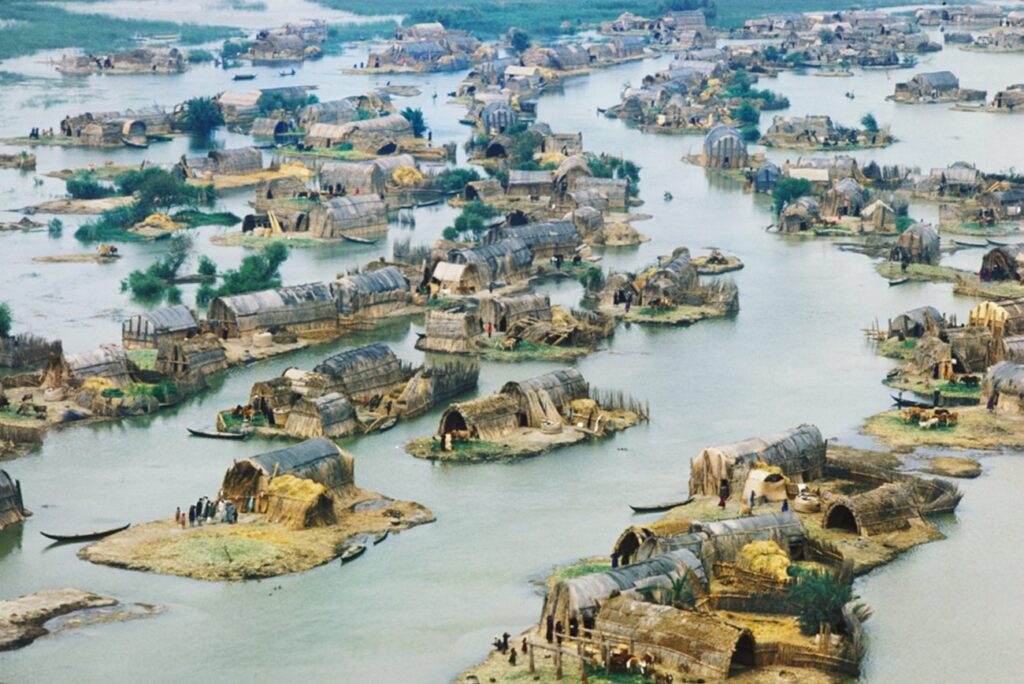
The Weeders largely worship their Heron Goddesses, the Oslira River, and their local Boat Boy, along with some other minor deities and spirits. Shargash is often worshiped as an associated deity. They have proven stubbornly resistant to Seven Mothers missionaries.
If you want a reference for Weeders, you could simply look at the people who live there today:
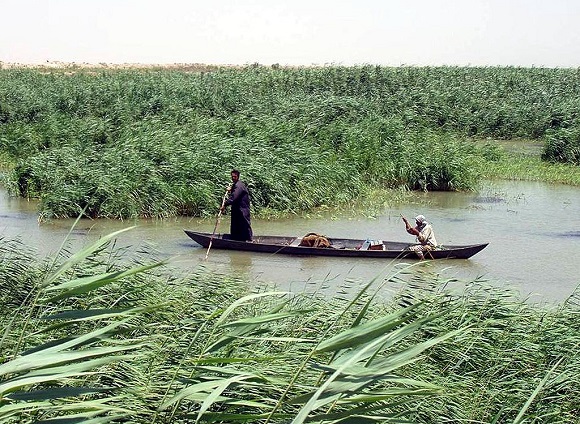
This, for example, is a Mashoof, the traditional long canoe used to navigate these waters. Here’s a video if you want more references. It’s got everything, from the boats to the reed huts and the herons!
Oslira
Since we’re on the shores of the Oslir river, Jeff writes about Oslira’s magic:
So I was recently pondering why Oslira does not provide Strongnet, unlike Engizi and Zola Fel. And I realized the answer is quite easy – the Oslira cult is not the cult of Weeders, who net fish.
[…]
Oslira’s cult is about keeping the river goddess happy (and within her embankments). It is far more agriculturally oriented than Zola Fel or Engizi. Fishing is often with spear by the River Priests, while with net by the Weeders.
I want to make an ironic quip here about RuneQuest and “sim-Glorantha” but I will refrain… oh, wait, I just did. Sorry. Anyway, the cool thing here is that Jeff points us to a 1950s photo of people spear-fishing in Iraq, and the spears are… not what you’d expect. Or not what I expected, at least. Here’s another picture with (as far as I can tell) more permissible licensing for sharing:
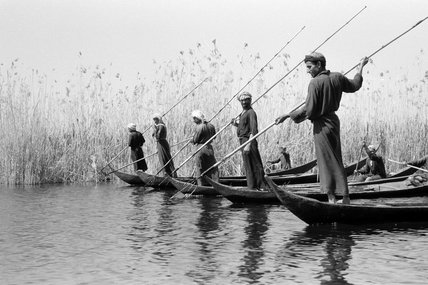
The spears look like long pitchforks with short spikes or something. Cool, eh?
By the way, if you want to know exactly what magic Oslira has, David Scott has you covered. And I like some of the discussion that followed, for instance about how Orlanth Thunderous is an associate cult of Oslira because its rains are the river’s source. David says:
Orlanth Thunderous is likely an associate of Oslira in the Grazelands, and Old Tarsh (where the rains fall at the headwaters), but as soon as it hits Tarsh, that’s likely it.
Some people asked why Heler isn’t the associate cult here, given that Heler is the actual rain god. Both David and Jeff replied, including this:
Heler is atmospheric water – Rain. He’s not the Cloud God – that’s Orlanth Thunderous. It is worth noting that Heler does not have Cloud Call (he gets that from Orlanth Thunderous). So he’s usually treated as an accoutrement of Orlanth, like Lightning, or the Sandals of Darkness, or the Mist Cloud. Orlanth is often depicted with a small blue god or goddess around him – the embodiment of Rain.
So you can consider that rain is one of Orlanth’s “cool stuff”, or you can personify this cool stuff into a separate deity. I vaguely remember a bunch of precedent for this, especially in Aztec and Mayan mythology, but I can’t find references at the moment. Anyway, if Orlanth’s rain can be turned into a spirit cult or even divine cult (depending on the place), Orlanth’s other cool stuff could also get the same treatment. Imagine the cult of the “dark sandals”, in which the main ceremonial activity is to relax in the shade? I’d sign up for lay membership.
The Drivers of the Hero Wars
Now we have another series of notes on everybody’s favourite Gloranthan meta-plot, the Hero Wars! (we had a similar series of notes a few months ago if I recall correctly). The four notes look at the first appearance of the “Gloranthan super-heroes” in the original board game White Bear & Red Moon.
Part 1 is about Glorantha’s Alexander, Argrath. Jeff mentions how Greg Stafford originally created a Second Age hero named Argat, which he later split in two by writing Arkat and Argrath into the setting:
Now it leaves everyone plenty of room to interpret – was Argrath a cynical but charismatic manipulator, was he a religious fanatic, was he a footloose adventuring rogue who found himself with great responsibilities, or was he seeking to redeem his ancestors and his people? Or maybe a bit of all of this? Your Argrath will vary, of course.
Regardless of our interpretation of Argrath the mundane individual, we know that he very much embodies Greg’s Hero Archetype for Glorantha, as Greg took his hero Argat (who defeated Gbaji and his empire in a Great War) and placed him in Dragon Pass to fight Gbaji-become-Red Goddess and her empire (Arkat and Gbaji get their own story a few years later with Cults of Terror).
There’s a bit more on Argrath here, which is very interesting: Greg designed the Orlanthi myths and customs around Argrath.
Let me just answer the underlying proposition – of course Argrath is a “good or at least acceptable Orlanthi hero”. He pretty much defines what an Orlanthi hero is. Remember, from a writer’s perspective, Greg created the Orlanthi around Argrath, not vice versa. Now we are all playing RQ in the Third Age as the Hero Wars are underway, so we don’t see things from that perspective, but that is how the Orlanthi were created as part of the setting – as the people Argrath comes out of and leads.
Greg created plenty of Orlanth’s myths to echo Argrath’s deeds – Orlanth and the Strange Gods, that parallels Argrath and his Praxian, Wolf Pirate, and draconic allies. The EWF was created as backstory behind the Hero Wars and the Dragontooth Runners. And the list goes on.
So with that in mind, it should not be surprising that Argrath manages to unify his people and lead them against the Lunar Empire, and was able to survive setbacks. He literally was created by Greg to be that hero for them! Now of course, there are people who distrust him, have rivalries with him, dispute his qualifications or competence – the same existed with Alexander of the Romances, Arthur, Achilles, and every other hero Greg was inspired by.
The other “drivers” of the Hero Wars are also presented as multi-faceted, with lots of room to interpretation in various games and game materials. Part 2 if about Harrek the Berserk:
Again, we have plenty of latitude for interpreting Harrek. Was he a murderous madman? A Conan-figure whose adventures bring him to the very heart of Glorantha’s mythology? Was he more of a Rustam figure who brought destruction often despite his best efforts?
I don’t think I have to explain who Conan is anymore than I need to explain Alexander, but Jeff gives other reference I didn’t know:
- Rostam, a legendary hero from pre-Islamic Persian mythology. A quick search yields classic hero stuff: a holy warrior riding a fancy horse, going into dangerous and possibly inter-dimensional places inhabited by powerful demons, fighting his nemesis, killing his son without knowing who it was, and so on.
- Bhima, one of the main figures in the famous Hindu epic family drama The Mahabharata. The story is roughly about the war between two groups of demi-god cousins, and he’s one of those. The Wikipedia page has a bunch of cool images that you could use to tweak your mental image of Harrek in unexpected ways.
In Part 3, the Red Emperor gets a bit of coverage — but a lot less than the previous two, probably because, I mean, it’s the Red Fucking Emperor, so being mysterious and distant is part of the vibe. Apart from his immediate entourage, I’m pretty sure nobody knows who he really is or even possibly what he looks like.
There are rumors that Moonson is little more than a figurehead, a walking icon that is the locus of Lunar worship, but actually all decisions and deeds are done by others. Other rumors suggest that each Moonson is an ambitious and remarkable figure capable of beating off rivals to gain and hold on the title. As with Argrath and Harrek, there is room for plenty of interpretations.
The last is of course the only lady in the superhero club, everyone’s favourite Gloranthan red-head, Jar-eel the Razoress:
And again, there is plenty of room for interpretation here. Jar-eel could be cheerfully amoral and ruthless, with a veneer of wry wit and smiles. She could be effortlessly awesome, a moral and artistic paragon, destined to combat savagery. She could be all of that, while doubts gnaw within her about her role, and whether she does in fact serve Gbaji.
Sheng Seleris Through a Pentan Lens
Jeff attempts to go over Sheng Seleris’ history through a Pentan point of view, rather than the usual Lunar one. In the Lunar version, he’s the ruthless horse nomad that brought the empire to its knees. In the Pentan version, he’s the ruthless horse nomad that brought the empire to its knees and that’s a good thing.
Now I present this not to whitewash Sheng Seleris but to remind folk that even his tale is not so straightforward. Sheng Seleris represented all that which had been usurped by the Red Goddess and her dynasty – the Imperial Light of Yelm, the Golden Empire. It is easy to see that if Orlanth needed to resurrect Dead Yelm to restore the cosmos, then Argrath needed to resurrect dead Sheng Seleris to restore the world.
The God Learners’ Trickster Studies
If you look at the Guide to Glorantha, you might blink and miss the write-up for Thanor:
Thanor (ruin): In the Second Age, this city was the capital of Slontos. The notorious “Trickster College” was here, an important school of the God Learners. The ruins are now half-submerged and home to schools of fish and Ludoch.
This is one of the reasons I love the Guide. I skim over cool stuff all the time, and then when I skim the same pages a different way, I pick up different cool stuff. Anyway, Jeff spells it out more:
The God Learners were fascinated by the Trickster Archetype. They believed (quite correctly) that this archetype was powerful and a key driver of the events of the Godtime. Eurmal was the most fully-fleshed out Trickster cult, but there were so many others. Raven, Rakenveg, Firebringer, Bolongo, Ratslaff, and more. Members of one cult could use magic from another, and so on. Another theory was that Arkat-Nysalor might be somehow connected to this.
And so the God Learners gathered everything they could and made a veritable Clown College in Thanor. Great insights and discoveries were made – and at its height, the seas came in and Thanor was submerged. Everything figures that was just another one of Eurmal’s jokes – a thank you for bringing all of his parts together in one place.
Given that I have an Eurmali player in my game, I suddenly have various crazy ideas for western travels…
Miscellaneous Notes
- Jeff went (probably) on a hike again and uses his pictures as reference for the Guardian Hills near Swenstown or Toena.
- A note about Beat-Pot Aelwrin, Jar-eel’s lover or pet project or sidekick or whatever you think is cooler. I don’t know yet what to do with this guy, frankly, so he’s still in my pile of stuff to figure out later.
- A cool little Orlanth-Ernalda marriage ritual example.
- A map of the tribes around Whitewall in 1625-1626.
Community Roundup
The community roundup is our highlight of interesting things being mentioned in the Glorantha-related Facebook groups, sub-Reddits, and other similar online places.
Newt’s Awesome Broo
Newt Newport (of D101 Games and OpenQuest fame) is going through a Gloranthan relapse over at his Arkat’s Playground blog. This article on “Why I Keep Coming Back to Glorantha” is a nice love letter to the setting… but also I love that giant Broo miniature!
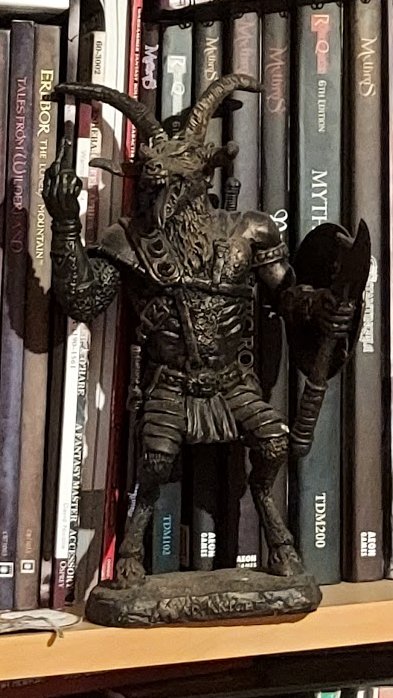
All Hail the Red Emperor!
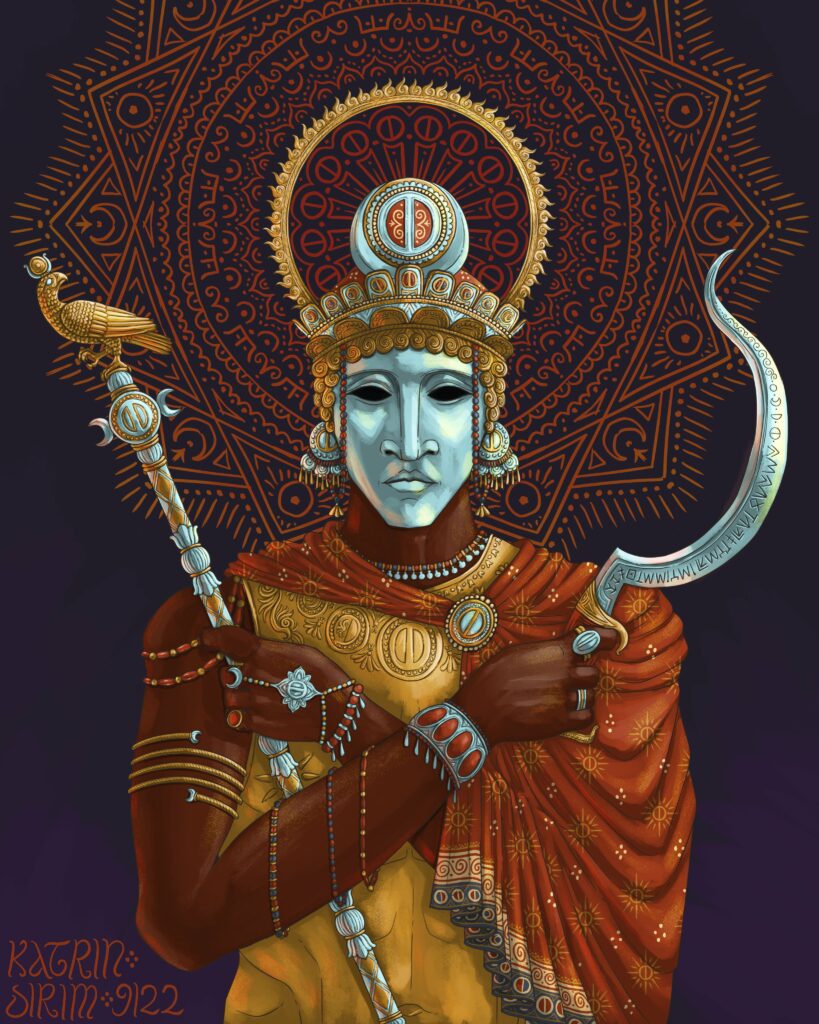
Katrin Dirim (who was one of our guests in this month’s episode) did this wonderful portrait of the Red Emperor!
Some RuneQuest Actual Plays
I came across a couple of rare RuneQuest actual plays that some of you might be interested in. I haven’t listened to or watched them yet so I can’t vouch for them.
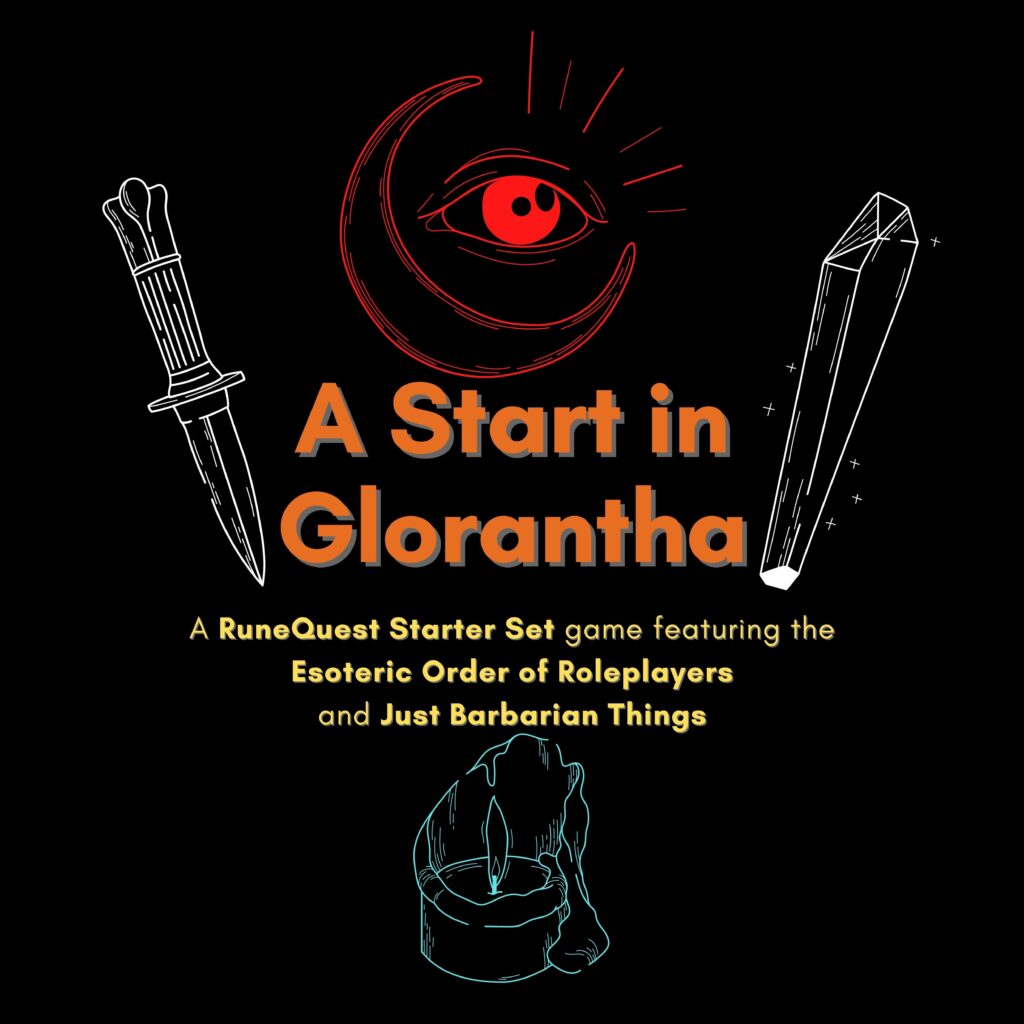
The first one is a podcast from Just Barbarian Things, and it runs through most of the Starter Set (except the Rainbow Mounds) in almost a dozen episodes.
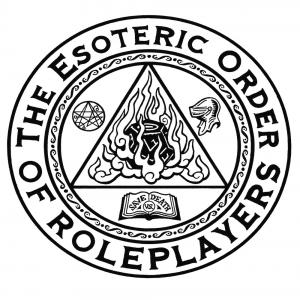
The other one is from the Esoteric Order of Roleplayers (who feature in the above podcast). They have one series called Prophecies of Doom that goes through The Broken Tower, some Apple Lane action, and Snakepipe Hollow. And then there’s another unnamed series that is a bit more eclectic in its adventure choices, with a mix of The Rattling Wind, Gaumata’s Vision, and more.
Going Solo: RuneQuest SoloQuest

TrooperSJP has a Twitch stream about playing the RuneQuest Starter Set’s solo adventure.
Beat-Pot Meme
Here’s a stupid Beat-Pot meme! No notes.
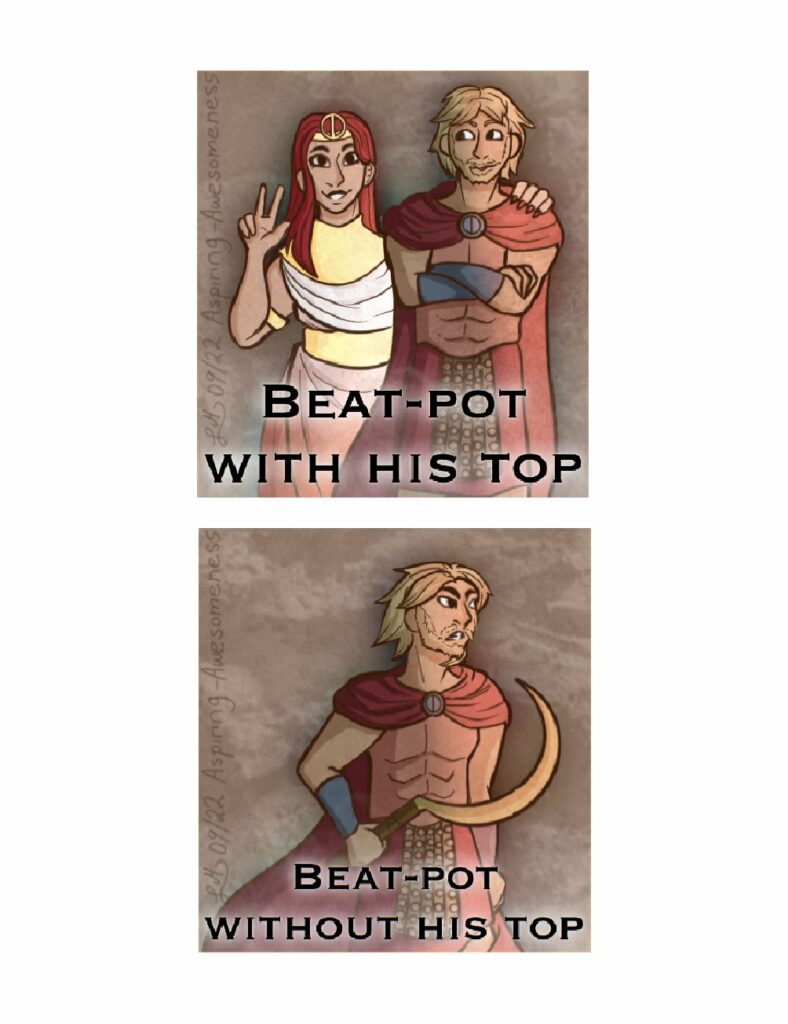
Thank you for reading
That’s it for this week! Please contact us with any feedback, question, or news item we’ve missed!



